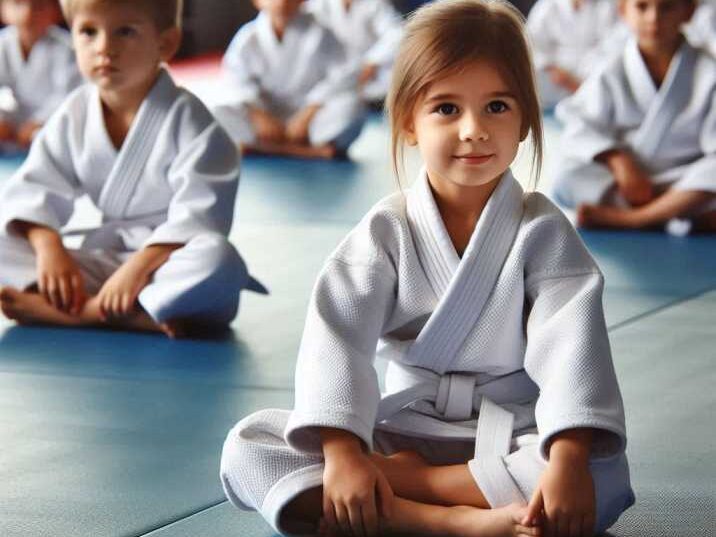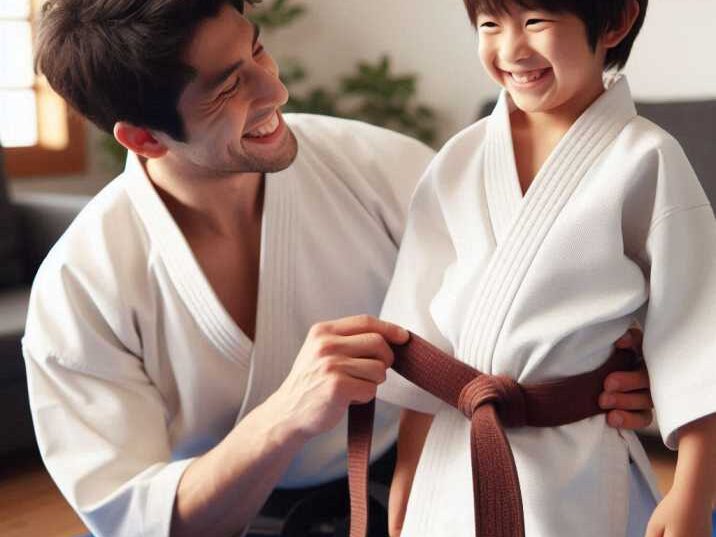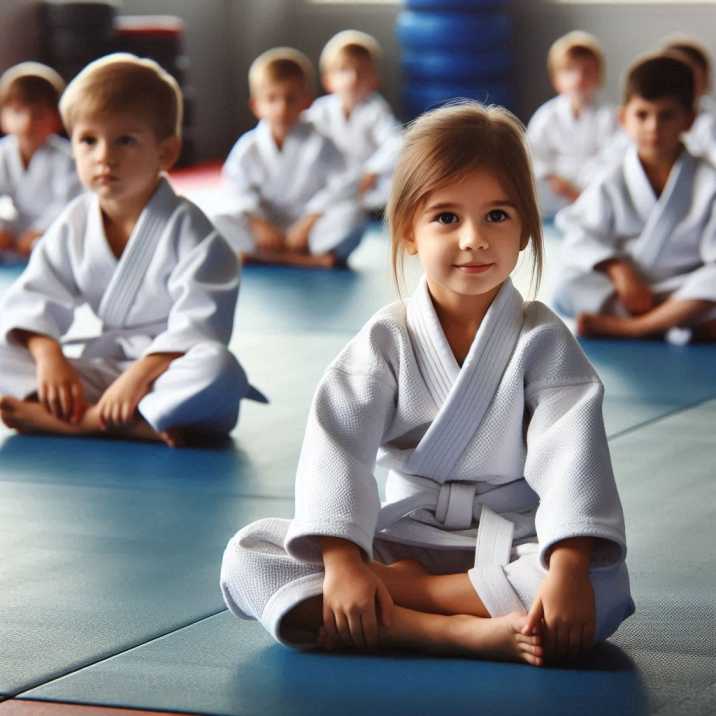Introduction
Table of Contents
Have you ever seen your child full of energy, eager to move, and curious about trying something new? If yes, Brazilian Jiu-Jitsu (BJJ) might be the perfect activity. But many parents ask the same question: “What age can you start Jiu-Jitsu?”
The answer: Most kids can safely begin their Jiu-Jitsu journey at 4 to 5 years old. At this age, they have enough focus, physical coordination, and curiosity to enjoy and learn from structured martial arts training. And the benefits? They go beyond the mat — helping your child focus better in school, gain discipline, and grow more confident every day.

Table of Contents
- What Is Brazilian Jiu-Jitsu?
- What’s the Best Age to Start Jiu-Jitsu?
- Benefits of Jiu-Jitsu for Kids
- Signs Your Child Is Ready for Training
- What Happens in a Kids’ Jiu-Jitsu Class?
- Progress and Belt Ranks
- Conclusion
- FAQs
What Is Brazilian Jiu-Jitsu?
Brazilian Jiu-Jitsu is a grappling-based martial art. It doesn’t involve punching or kicking. Instead, it focuses on control, technique, and leverage to help smaller individuals defend themselves against bigger opponents.
This makes it perfect for kids because it teaches them how to stay calm, think clearly, and protect themselves in a smart and safe way.
What’s the Best Age to Start Jiu-Jitsu?
Most martial arts schools accept kids as young as 4 years old into their beginner programs. This age isn’t set in stone, but it’s when many children can:
- Follow simple instructions
- Focus for short periods
- Work well in small groups
- Move with better balance and coordination
Some schools even offer “Little Grapplers” or “Tiny Ninjas” programs for ages 3 to 4, where classes are shorter and more playful. These classes build body awareness, patience, and listening skills — all without pressure.
Benefits of Jiu-Jitsu for Kids
Jiu-Jitsu isn’t just an exciting sport — it helps kids grow stronger mentally, emotionally, and physically. Here are some powerful benefits of enrolling your child in Jiu-Jitsu classes:
1. Enhanced Focus and Concentration
Practicing Jiu-Jitsu requires kids to stay attentive and follow instructions. Through repetition and structured learning, children naturally develop better focus, which often leads to improved performance in school and other activities.
2. Greater Self-Discipline and Control
Mastering Jiu-Jitsu techniques takes patience. Kids learn to listen, wait their turn, and respect their instructors and peers. This promotes discipline, responsibility, and respect — essential life skills at any age.
3. Boosted Confidence and Self-Esteem
Each new move mastered or stripe earned helps kids feel proud and accomplished. Over time, this builds a strong sense of self-worth that can extend into other areas of life, like school and social situations.
4. Improved Physical Health
BJJ is a full-body workout that keeps kids active, strong, and flexible. It enhances their coordination, balance, and stamina, all while making fitness fun and engaging.
5. Effective Self-Defense Skills
Rather than teaching kids to fight, Jiu-Jitsu focuses on how to protect themselves without violence. It helps them remain calm under pressure and handle situations confidently and safely.
6. Building Friendships and Teamwork
Jiu-Jitsu is a social sport. Kids work with partners, learn cooperation, and support each other. Many make lasting friendships through shared training and mutual encouragement.
7. Emotional Growth and Resilience
Through wins and losses, Jiu-Jitsu teaches kids to stay humble, handle frustration, and keep trying. These lessons help develop emotional strength and maturity — traits that benefit them for life.
Signs Your Child Is Ready for Jiu-Jitsu
Is your child prepared to step on the mat? Here are a few signs:
| Sign of Readiness | What It Looks Like |
|---|---|
| Follows Directions | Listens to adults and takes instruction seriously |
| Social Interaction Skills | Plays well with others, takes turns |
| Physical Coordination | Can run, jump, roll without fear |
| Focus and Patience | Can sit still and stay on task for 10+ minutes |
| Interest in Martial Arts | Shows excitement about training |
If your child checks most of these boxes, they’re ready to roll!
What Happens in a Kids’ Jiu-Jitsu Class?
A typical kids’ class runs about 30 to 45 minutes and includes:
1. Warm-Up
- Running, jumping jacks, crawling
- Games that develop motor skills
2. Technique
- Kids learn basic positions, escapes, and takedowns
- Instructors use simple language and demonstrations
3. Drills
- Practice with a partner to repeat and remember the move
4. Games and Sparring
- Controlled games like “Jiu-Jitsu Tag”
- Light sparring (rolling) in advanced classes only
Progress and Belt Ranks
Progress in Jiu-Jitsu is shown with colored belts. Most schools use the following order for kids:
| Age Group | Belt Colors |
|---|---|
| 4–6 Years | White, Gray, Yellow |
| 7–9 Years | Yellow, Orange |
| 10–13 Years | Orange, Green |
| Teenagers | Blue and higher |
Each child earns stripes on their belt before being promoted to the next color. Promotions are based on attendance, skill, attitude, and effort.

Conclusion
So, what age can you start Jiu-Jitsu? The sweet spot is around 4 to 5 years old, but every child is unique. Starting young builds habits that last a lifetime — from self-control and confidence to fitness and focus.
If your child is curious, energetic, and ready to listen, it’s a great time to try Jiu-Jitsu. It’s not just about martial arts — it’s about helping your child grow strong in body and mind.
FAQs
Q1. Can a 3-year-old do Jiu-Jitsu?
Yes, some schools offer playful classes for toddlers with focus on movement and fun.
Q2. Is Jiu-Jitsu dangerous for kids?
No, when taught by trained instructors, it’s very safe and designed for all ages.
Q3. How often should kids train?
2 to 3 classes per week is ideal for steady progress and fitness.
Q4. Do kids need to spar or fight?
No, sparring is introduced gradually, and always in a safe, respectful setting.
Q5. Can Jiu-Jitsu help shy or anxious kids?
Yes, it builds confidence, communication skills, and helps children feel more secure.



